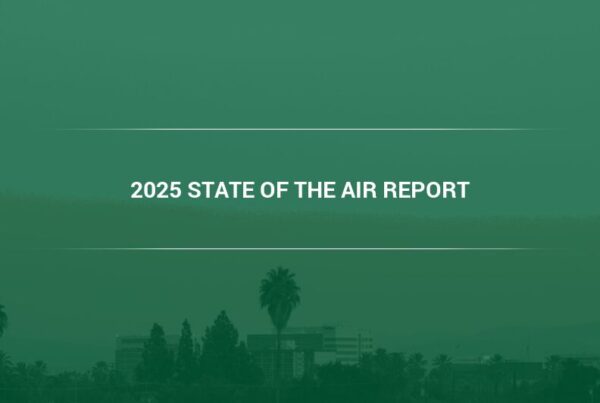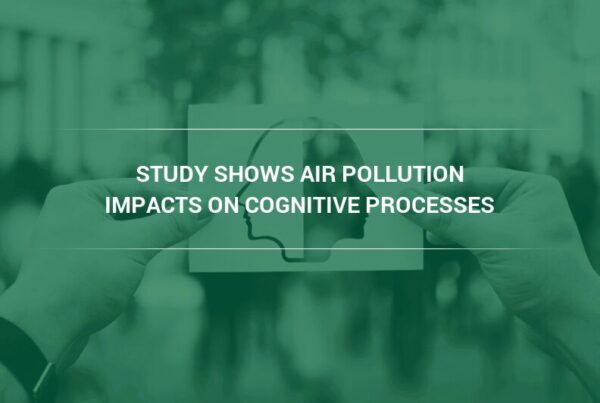In the U.S. alone, more than a hundred million people are exposed to varying amounts of particulate matter, lead, or other pollutants in the air in portions that exceed the identified health standards set by the Environmental Protection Agency. This includes children in public schools, additionally, one in every eleven public schools is within 500 feet of major highways or other heavy sources of pollution. (1)
More http://www.camfil.us/Industries/Schools–Universities/
While much attention has been paid to the dangers of air pollution when it comes to cancer and other illnesses impacting the respiratory and cardiovascular systems, less attention has been given to the effects air pollution can have on cognitive health. Air pollution and academic performance seem to be linked, as new studies have found concerning evidence about the impact of pollutants on neurological health and function.
Poor air quality has been found to have remarkable and detrimental effects on young children, and can adversely affect their ability to learn. It is therefore critical to ensure good air quality in schools, so that children may have the best possible education. Studies have even shown that the abilities of teachers to teach can be affected by poor air quality.
Impact of Air Pollution on the Brain
In terms of the impact of air pollution on the brain, much of the risk comes from particulate matter 2.5 micrometers or less in diameter (or approximately 1/30 of the width of a human hair). The majority of these particles are small enough to penetrate into the lungs and other organs of the body.
The physiological development of children is uniquely susceptible to and harmed by exposure to environmental toxins when compared to adults. Children tend to breathe in higher levels of polluted air in comparison to their weight and have a tendency to spend much more of their time outside, which leaves them highly susceptible to the disorders caused by air pollutants. (2)
“Many studies carried out between 2012 and 2015 have analyzed brain imaging data for children residing in cities, with the objective of pinpointing the harmful side-effects on the brain of living in heavily polluted regions.” says Camfil’s Charlie Seyffer, Manager of Technical Materials.. “An analysis of brain structures found abnormalities in the brain’s white matter, which is most often correlated with a number of different mental and cognitive disorders and diseases.” (3)
The structural findings were corroborated by finding functional anomalies, parts of the brain that behaved differently than expected in a typical population. Functional anomalies consisted of issues such as compromised senses and cognitive deficits. Various research groups have continually found that school-aged children who live in highly polluted areas perform substantially worse on cognitive and neurological tests, even when controlling for other factors such as gender, age, mother’s IQ and low-SES.
Yet other studies, such as a 2010 study, show that children with exposure to excessively high amounts of nitrogen dioxide scored around six to nine points lower than average on tests of working memory. In 2015, a research group from the University of Texas discovered lower grade point averages among fourth-and-fifth graders in El Paso who were exposed to high levels of air pollution.
Evidence suggests those effects can happen very early, and children with excessive prenatal exposure to aromatic hydrocarbons (substances that get launched into the air by burning things like coal, oil, fuel and trash) were recorded as having low IQ ratings at the age of five, when compared to children that did not have such exposure.
Other Effects of Air Pollution on Academic Performance
Aside from directly affecting cognitive performance by damaging developing brains, there are other effects of air pollution on academic performance. Poor air quality can impact student performance through more traditional illnesses as well. Asthma and allergies can often increase absenteeism. Rates of asthma and other respiratory illnesses are higher in areas with high air pollution rates.
Schools in areas with the highest pollutant levels also have the lowest attendance, and attendance is a potential indicator of student health. These schools also have the highest percentage of students failing to meet the state’s testing standards.
“Poor and minority students are at particular risk for cognitive impairment and other health problems, as they are more affected by negative air quality in general. A recent article from Health Affairs underscores the link between air pollution and academic performance,” explains Seyffer. “Another study shows that many schools in Michigan were located in places with high amounts of air pollution from industrial sources. The study found that even though 44 percent of white students in the state have been impacted by air pollution, 62 percent of Latino students had been affected, along with 82 percent of African American students had been affected.” (4)
Addressing the Problem of Air Pollution and Academic Performance
“When addressing the problem of air pollution and academic performance, the vulnerability of children should be kept in mind. Kids have little to no say in where they live or attend school,” says Seyfferat Camfil. “Parents often cannot find the money to send their child to a different school or move to a different city, so government leaders will have to take action to ensure that schools are safe for children.” (5)
Those who are concerned about air quality at their child’s school but cannot afford to move to a different city can still take a few actions to ensure their local school is as clean as it possibly can be.
It’s possible to make sure that the indoor environment at a school is as clean as it can be by creating an indoor environmental quality team to tackle indoor air pollution problems. Parents, teachers, administrators and students should work together to limit the use of pesticides and improve ventilation for the school. It’s also important to be proactive in school siting. Communities should make sure siting guidelines exist to limit the pollutant exposures which may take place with a polluted school site. Improving the outside air quality in these areas will take a lot of effort and many years to reverse the trend. There are filtration systems that may be installed, either as an addition to existing HVAC systems or as a positive plan of action for new construction projects. Camfil is a major supplier that has a history assisting those that take proactive steps to protect students and staff. They offer products to control particulate or gaseous contaminants such as the aforementioned nitrogen dioxide or ozone.
If a school district is planning to construct a new school, get involved and be sure that the community is familiar with the importance of choosing good school sites, free of pollution. Help train school boards, teachers, principals, and everyone else so they understand the link between air pollution and academic performance and how important good siting is for the health and education of the children in the community.
To get more information on the how air pollution and academic performance of students is linked, or to purchase air purifiers or air filters, contact Camfil today.
Lynne Laake
Camfil USA Air Filters
T: 888.599.6620,
E:Lynne.Laake@camfil.com
F: Friend Camfil USA on Facebook
T: Follow Camfil USA on Twitter
Y: Watch Camfil Videos on YouTube
Sources:
http://e360.yale.edu/digest/children-at-nearly-8-000-u-s-public-schools-breathe-highly-polluted-air
https://www.learningandthebrain.com/blog/air-quality/
http://www.econweb.umd.edu/~ham/test%20scores%20submit.pdf
http://content.healthaffairs.org/content/early/2011/05/02/hlthaff.2011.0077.full



